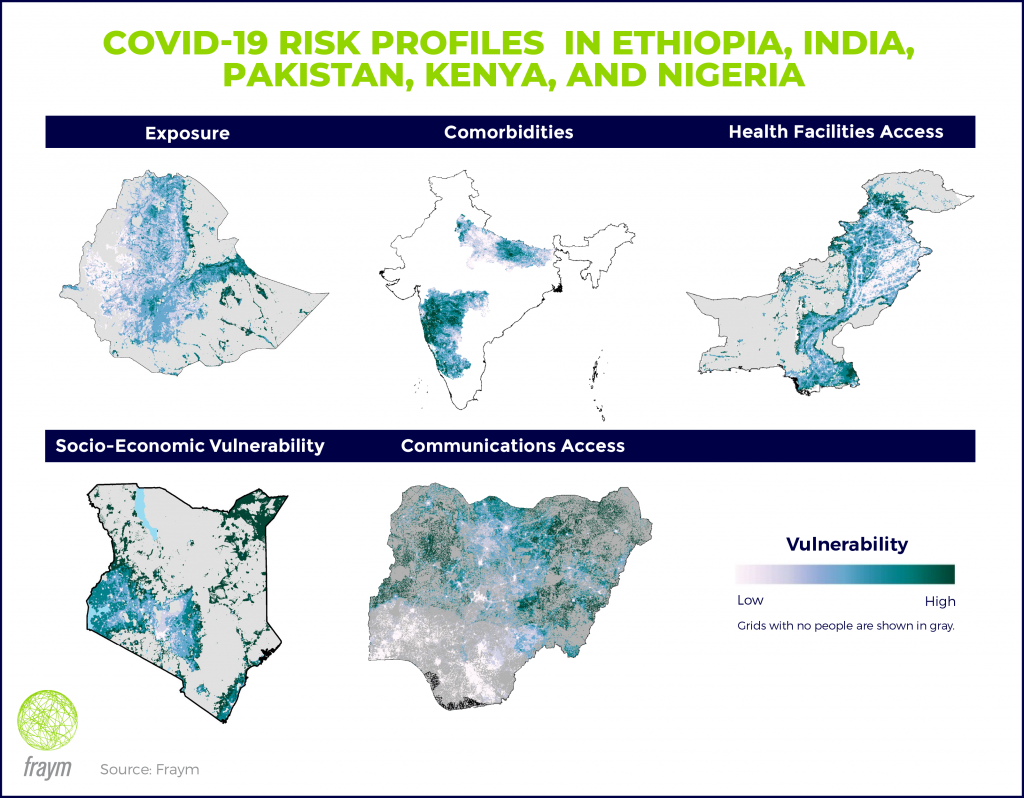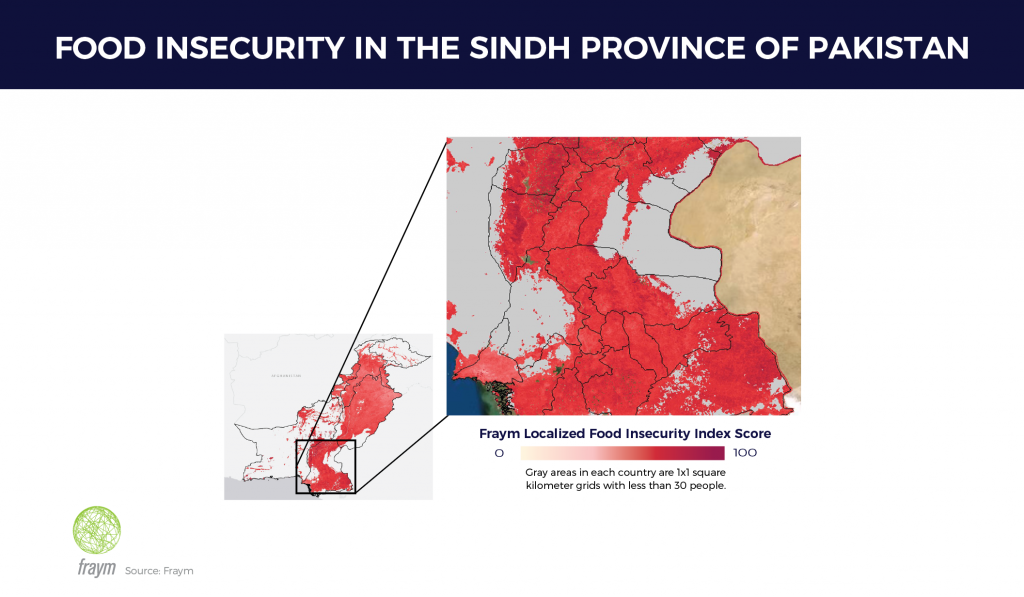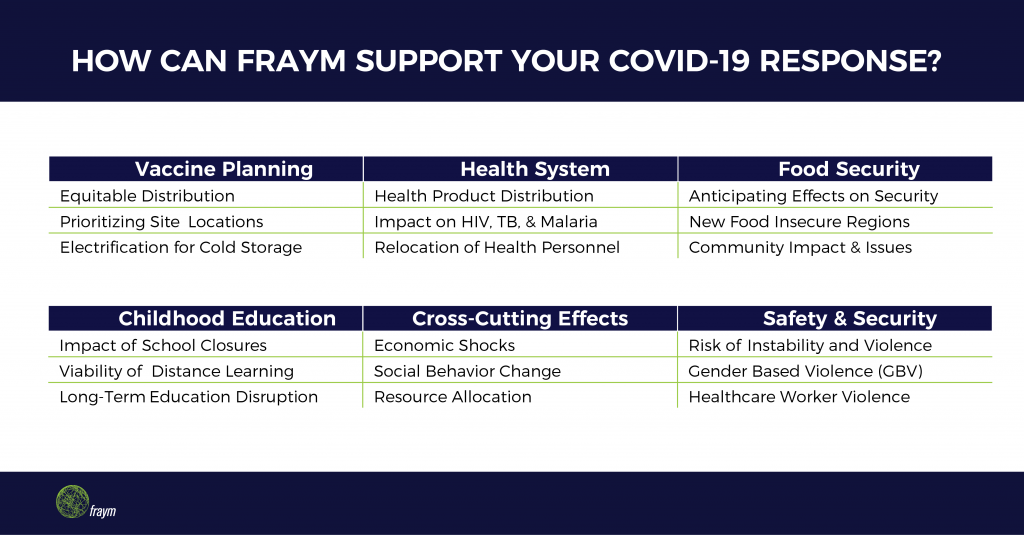Build Effective Social and Behavior Change Strategies

Understanding a community’s unique vulnerabilities and resiliencies is critical to prepare for and respond to disease outbreaks. Unfortunately, population information and health data is often only available at aggregated levels that obscure health disparities between key populations, small towns, and neighborhoods. COVID-19 has affected communities around the world in strikingly different ways, laying bare the need for:
Fraym’s unique data and technology helps organizations address these pressing needs. Here is how we have been working with partners to support COVID-19 responses around the world:
Measuring Community Risk and Vulnerability to COVID-19
In Ethiopia, India, Pakistan, Kenya, and Nigeria, Fraym developed population profiles that measured various COVID-19-related risk across five themes:
Government and public health organizations integrated this data into their decision-making tools to inform resource allocation, rapid response initiatives, crisis communications, and preparing for pandemic-related downstream effects.

Measuring the Impact of School Closures on Students
In Ethiopia, Kenya, and Nigeria, Fraym measured the impact of COVID-19 on primary and secondary school education to mitigate the effects of school closures. Fraym identified where COVID-19 exposure was most likely to occur and how many youths were at risk of losing access to education as a result.
Isolating Community Water, Sanitation, and Hygiene (WASH) Risks to COVID-19
In Nigeria, Fraym analyzed WASH and non-WASH factors of exposure and susceptibility to COVID-19. Fraym calculated distance to improved, shared water sources and detected populations most at-risk due to known health conditions to redirect the government’s ongoing prioritization of WASH infrastructure investment and service provision.
Monitoring Pandemic-Related Changes to Human Capital
In Benin and Togo, Fraym is mapping COVID-19 transmission hotspots due to lifestyle factors and identifying communities with high concentrations of individuals vulnerable to COVID-19 complications. Fraym is overlaying mobile phone survey data on this vulnerability data to monitor changes in human capital due to the pandemic—for example, access to education while schools are closed, the ability to work, and food insecurity.
Anticipating Downstream Effects of COVID-19
Across multiple countries, Fraym is working with a USG customer to build data layers and models that illustrate risk for downstream effects of the pandemic – e.g., food insecurity, economic shocks, instability, violence, etc. The goal of this analysis is to help decision-makers proactively target resources in the areas most in need of humanitarian and stabilization support.
Analyzing Food Security Threats During the Pandemic
Fraym constructed a Localized Food Insecurity Index (LFII) to make insights on food security threats and vulnerabilities available for decision-makers at the hyper-local level without risking the health and safety of enumerators in the COVID-19 environment. Click here to download the white paper.

